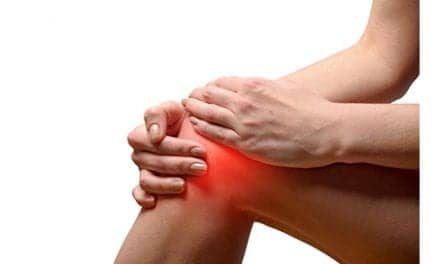An injury to the anterior cruciate ligament (ACL) can lead to severe osteoarthritis in both animal and human patients. However, a new interdisciplinary study on the protein that lubricates our joints, published in Scientific Reports, suggests that lubricant may actually be a precursor of joint disease.
The study investigates the role of a protein known as lubricin in ACL-type injuries in dogs. It may also have larger implications for similar injuries in humans as well as the potential for treatments and therapeutics, a media release from Cornell University explains.
“Lubricin is crucial for normal joint function and the lubrication of cartilage. We know that if a person or animal doesn’t make that protein, they will develop devastating joint disease affecting all the major weight-bearing joints.”
— senior author Heidi Reesink, PhD, the Harry M. Zweig Assistant Professor in Equine Health at the College of Veterinary Medicine (CVM)
Conflicting Data Regarding Role of Lubricin
Lubricin is universal to mammals, including humans, though there is conflicting data regarding its role in joint injuries. Reesink’s study suggests that, in canine patients that had suffered a ligament tear in the knee, lubricin increased within the joint – the opposite of conventional assumptions in medicine. “The dogma in this field has been that lubricin decreases in joint disease,” Reesink said.
In three canine patients that had a joint injury, lubricin dramatically increased in the time between their initial injury but before any signs of arthritis in their x-rays.
“This indicates that the presence of increased lubricin might actually be a biomarker for predicting future osteoarthritis,” Reesink adds. “We also saw increased lubricin in dogs months to years after they injured their ACLs, suggesting that lubricin might be an indicator of ongoing joint instability.”
Reesink notes that increased lubricin could consequently be a signal for clinicians to intervene or try a different treatment approach.
Reesink and her collaborators laid the groundwork for this new study by completing a systematic review of the literature surrounding lubricin in both human and veterinary medicine. The review was published recently in the journal Osteoarthritis and Cartilage.
The overall finding of the review: There is no unified consensus on how lubricin is altered in other domestic veterinary species and in human joint injury, demonstrating the need for further study – which Reesink’s new paper has done.
“In looking at horses and dogs, we’re seeing the same pattern,” she continues. “The strongest piece of data would be to show it in humans as well.”
Reesink and her collaborators worked with the Cornell Veterinary Biobank to obtain samples. The biobank supports CVM researchers as well as scientists around the globe, using biological samples collected from both ill and healthy animals at the Cornell University Hospital for Animals (CUHA). The samples are processed, catalogued and provided to researchers, which accelerates biomedical research.
Motivator for Study: Knee Ligament Injury
Among the motivators for this study, said Reesink, is that a large number of cases in the small animal orthopedic section at CUHA is knee ligament injury, which is common in dogs.
“We can help both animals and humans by potentially coming up with better diagnostics, by more fully understanding how these molecules work and designing therapies beneficial to both, by taking advantage of these naturally occurring cases and improving orthopedic care.”
— Heidi Reesink, PhD
In the veterinary realm, Reesink’s team plans to do a follow-up longitudinal study in dogs, examining multiple time points in a patient’s injury, treatment and recovery process. They also hope to draw similar connections in human ACL and other orthopedic injuries.
[Source(s): Cornell University, Newswise]
Related Content:
Team IDs Muscle Gene That, When Altered, Causes Joint Disease Such as Scoliosis
This Links Joint Disease and Psoriasis, Researchers Note
Lockdown’s Impact on Bone, Joint, and Muscle Pain





